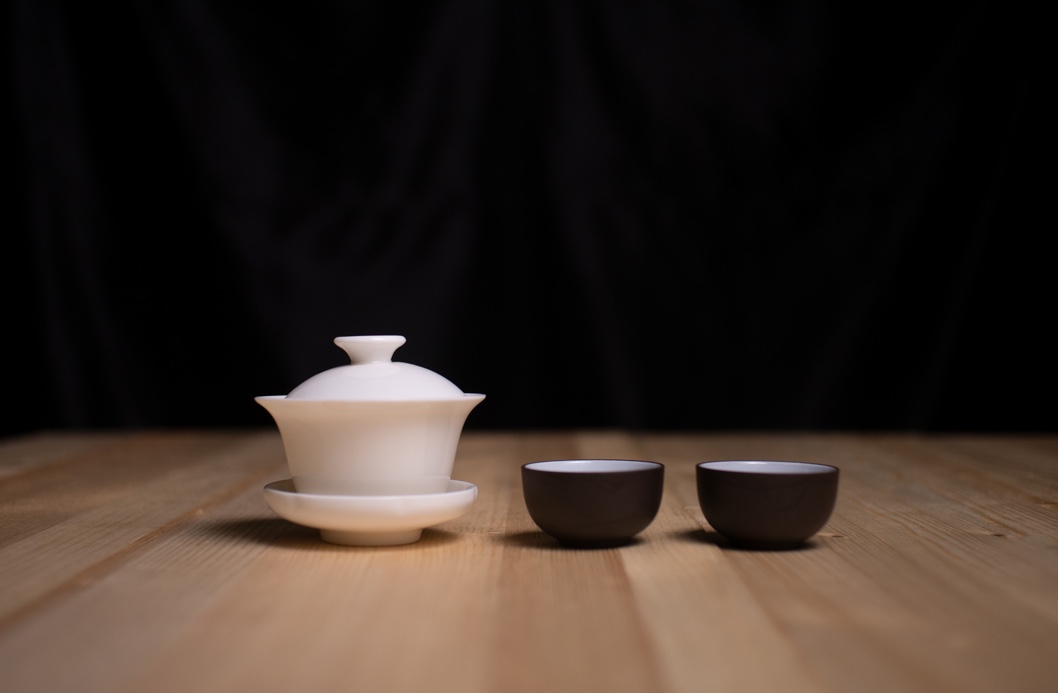Introduction to tea
Use and cultivation of tea started in prehistoric times when wild ancestors of modern tea teas grew in the region of the modern Yunnan Province of China. Tea was initially used for its medicinal properties and, with time, the bitter brew was transformed to the pleasant drink that we have now.
Today, tea is has become a commodity, grown widely for mass consumption. While not necessarily bad, refinement is not the primary concern when the “supermarket tea” is produced. For the purposes of this guide we will instead focus on “specialty tea” that is prized for its aroma and taste. In this part will look into three main categories of Chinese teas you should first get familiar with.

Chinese teas
The birth place of tea culture is, arguably, China and Chinese tradition of cultivating, processing and preparing teas is, in my opinion, the richest. In this section we shall look into three types of Chinese tea and the Gong-fu style of steeping tea.
Tea is made of leaves of the tea tree. As soon as leaves are collected, they start to whither – this process is technically called “enzymatic oxidation” because it happens under the influence of enzymes reacting to the damage to the leaves. Oxidation is, usually, stopped by heating the leaves and the stage at which it happened determines the type of tea that results from it.
- Green tea: if oxidation is stopped promptly after the leaves are collected, then the tea retains the green color and the “greenness” and grassiness of the taste and aroma. Green teas have an abundance of bitter-tasting chemicals and the brew can become very bitter if over-steeped. Green teas also degrade relatively quickly and are particularly treasured for their freshness.
- Wulong tea: also called “oolong” (based on historic transliteration), these are partly oxidated teas. Producing these teas require particular level of mastery and experience that allows producer to induce creation of complex aromatic compounds in the leaf and wulong teas frequently have some unexpected flavor profiles. There are many kinds of wulong teas, from very lightly oxidated, when they are closer to green teas, to almost completely oxidated, when they are more like black teas.
- Black tea: in black teas, special processing of the leaf allows it to undergo the complete oxidation process is a very short time. During this processing, leaves turn dark brown. The drink made from the black tea leaves has the characteristic reddish-orange color, this is why black teas are called as “red” in Chinese classification.
Gong-fu-style brewing
When brewing gong-fu style, a relatively large quantity of leaves is used with a relatively small amount of water. Tea is steeped for a short time (typically a few seconds) and the vessel is completely drained between numerous brews into cups or into a special pitcher called the “fair cup”.
Vessels used for gong-fu style brewing range from miniature teapots to special button-activated brewers. If you are starting with gong-fu style brewing, we recommend you to consider a “gaiwan” – an authentic vessel for steeping and drinking tea. Gaiwan literally means “lidded cup”. Basic gaiwans are fairly inexpensive and very versatile, allowing you to steep many kinds of teas.
Brewing green tea- Ratio of leaf to water: 3 g / 100 ml
- Temperature: 80°C (pour the freshly boiled water into a pitcher or some other vessel and leave it for a couple of minutes to cool down)
- Steeping #1: 30 s
- Steeping #2: 15 s
- Steeping #3: 40 s
Green teas are usually depleted after the third steep but you can try using freshly boiled water or steeping the tea longer.
Brewing wulong tea- Ratio of tea to water: 6 g / 100 ml
- Temperature: 95°C (let the kettle sit for a couple of minutes after boiling)
- Steeping #1: 15 s
- Steeping #2: 10 s
- Steeping #3: 20 s
- Steeping #4: 30 s
- Steeping #5: 60 s
4-5 steeps is usual for wulongs but some high quality ones an be steeped for 6 or more times. Try steeping the tea for longer.
Brewing black tea- Ratio of tea to water: 3 g / 100 ml
- Temperature: 95°C (wait for the boiling noises in the kettle to stop)
- Steeping #1: 15 s
- Steeping #2: 10 s
- Steeping #3: 30 s
Black teas, just like the green teas, are “exhausted” relatively quickly. Try increasing the brewing time after the 3rd steeping.
What to get and where to get it
There are many reputable places to get teas and we recommend Yunnan Sourcing – that’s where we get Chinese teas and equipment ourselves. Browse the site to see what is available but here’s a sampling of what you might consider:
Gaiwan: White Porcelain Gaiwan for Gong Fu Cha Brewing * 100ml
Cups: Hua Ning Pottery "Celadon Green on Red Clay" Tall Cup 110ml
Pitcher/Fair cup: Clear Glass "Cha Hai" Serving Pitcher for Gong Fu Cha * 350ml
Chinese green tea: Classic Laoshan Green Tea from Shandong
Wulong: Premium AA Tie Guan Yin of Anxi Oolong Tea of Fujian
Chinese black tea: Premium AA Tie Guan Yin of Anxi Oolong Tea of Fujian
What next?
In this introductory guide we’ve written about 3 types of Chinese teas – Green teas, Wulong teas and Black teas. These teas should give you points of reference for appreciating a variety of teas in these categories or in 3 other classic categories: White teas, Yellow teas and Dark teas (that last one includes the famous Pu’er or Puerh teas of Yunnan).
Unique tea traditions also formed in Japan, where Matcha – a special powdered tea and intensely grassy Sencha are made. India has also contributed hugely to the tea culture with the dominant today Assam tea variety and the delicate Darjeeling. We will continue those teas in future installments of this guide.
